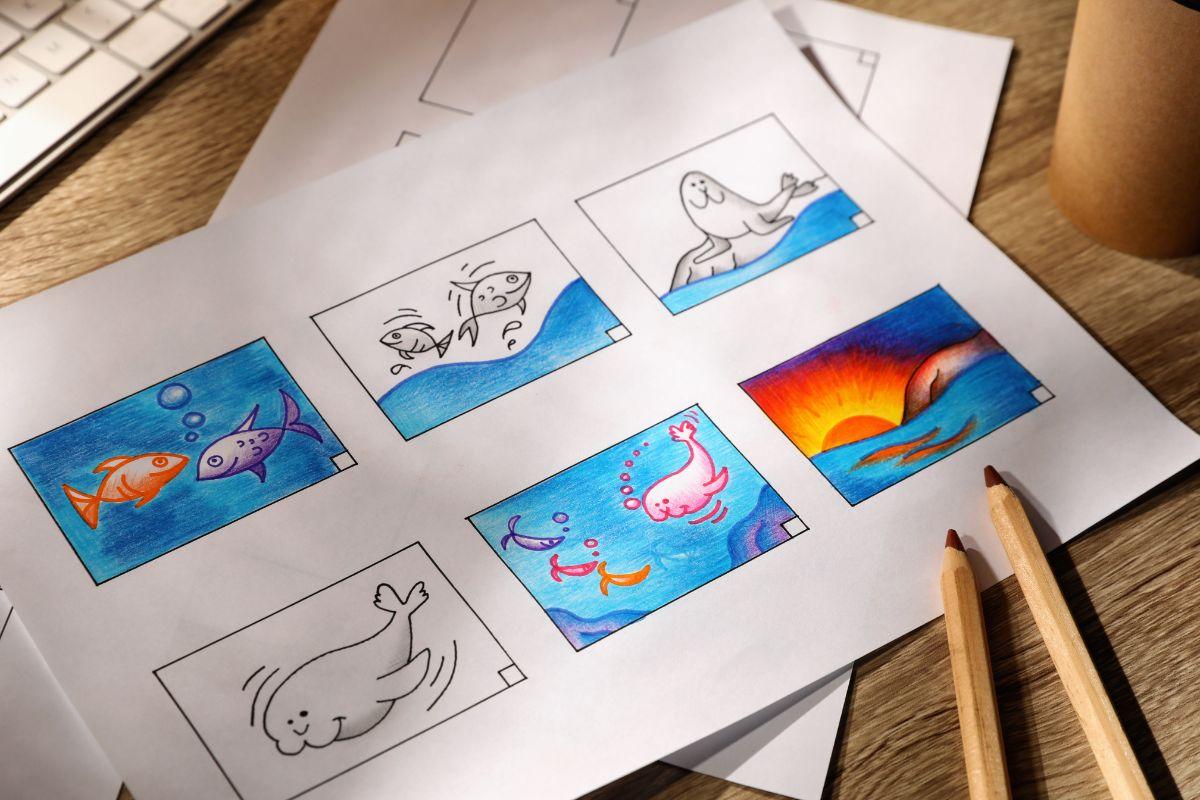In the dynamic world of animation, the script serves as the backbone of any project, guiding the visual storytelling and ensuring that the narrative flows seamlessly from start to finish. Animated scripting, a specialized craft within the broader domain of screenwriting, requires a knack for storytelling and an understanding of the unique constraints and possibilities inherent in animation. This primer is designed to demystify the process of animated scripting, offering insights and tips to make this creative endeavour more accessible and effective.
Understanding the Basics of Animated Scripting
Animated scripting is the art of crafting a script specifically designed for animation. Unlike live-action scripts, animated scripts must consider the limitless potential of vibrant environments and characters, allowing creativity and imagination to take the lead. This form of scripting encompasses everything from short commercials to full-length features and requires a deep understanding of animation’s technical aspects and narrative potential.
The Significance of a Strong Script in Animation
A strong script is crucial in animation, laying the groundwork for an intricate and labor-intensive production process. It tells the story and describes the visual elements, character movements, and timing for each scene. The script is the first step in bringing an animated world to life, making it essential to be clear, engaging, and perfectly aligned with the vision of the animation team.
Components of an Effective Animated Script
An effective animated script includes several key elements:
- Character Development: Detailed descriptions of each character, including their personalities, motivations, and how they change throughout the story.
- Visual Descriptions: Vivid descriptions of settings, backgrounds, and key visual elements that set the tone and atmosphere.
- Dialogue: Character interactions that drive the story forward and reveal key plot points and character traits.
- Action Lines: Detailed actions describing what happens in each scene are crucial for planning the animation.
- Timing: An approximation of the timing for scenes and actions, guiding the pacing of the animation.
Tips for Successful Animation
- Start with a Strong Concept: Before diving into the script, ensure your core idea is solid, original, and suited for animation.
- Visualize While Writing: Keep the limitless potential of animation in mind. Imagine the scenes playing out in animated form as you write.
- Focus on Show, Don’t Tell: Utilize animation’s visual nature to show emotions, transformations, and major plot points without relying heavily on dialogue.
- Be Flexible: Animated scripting often involves revisions and adaptations, especially as the animation process uncovers new possibilities or challenges.
- Collaborate with Artists and Animators: Their insights can help refine the script, ensuring it’s feasible and aligned with animation techniques and storytelling goals.
Integrating Custom 2D Animation Solutions
Incorporating custom 2D animation solutions into your project can significantly enhance the animated scripting process. These tailored services offer unique styles, character designs, and animation techniques that can bring your script to life in ways that pre-packaged solutions cannot. Working closely with a team that provides custom 2D animation allows for a more collaborative and integrated approach to animation. This ensures that the final product closely aligns with the original vision of the script.
The Role of Technology in Animation
Advancements in technology have made animated scripting more efficient and effective.
Scriptwriting software now includes features tailored for animation, such as storyboard integration, timing tools, and collaboration platforms. These features allow writers to visualize their scripts more dynamically and work closely with the animation team throughout the production process.
Challenges in Animated Scripting
- Balancing creativity with feasibility.
- Managing complex narratives effectively.
- Ensuring alignment with budgetary and time constraints.
Successful animated scripting requires
- A blend of artistic vision and practical planning.
- Unique skills within the animation industry.
The Future of Animated Scripting
As animation continues to evolve, so will the art of animated scripting. Emerging technologies, such as AI and virtual reality, are set to open new avenues for storytelling. It would offer even greater possibilities for scriptwriters to explore. The future of animated scripting is limitless potential, where the only boundaries are those of the imagination.
Unleashing Creativity through Animated Scripting
Animated scripting is a pivotal phase in animation production, offering a unique blend of storytelling, visual art, and technical precision. Whether crafting a short commercial or a feature-length film, the script is where the magic begins. By understanding the essentials of animated scripting and embracing the collaborative creative process, writers and animators can work together to create something extraordinary. With the integration of custom 2D animation solutions and the latest technological tools, animated scripting is more exciting and accessible than ever. It promises a future where the stories we imagine can come to life in more vivid and engaging ways. This future surpasses what we ever thought possible.






